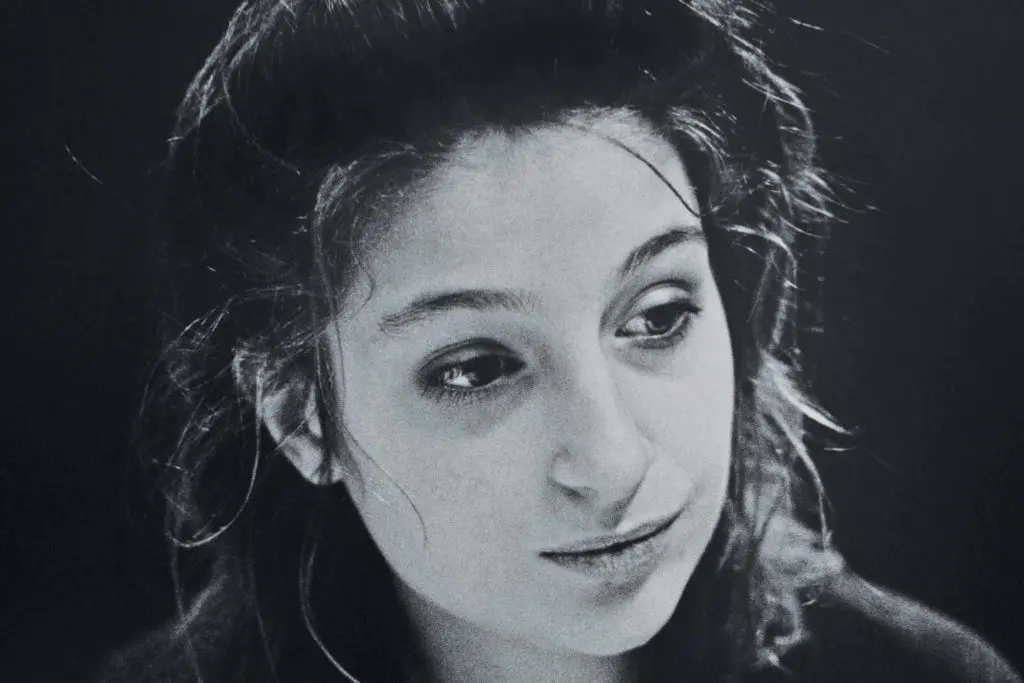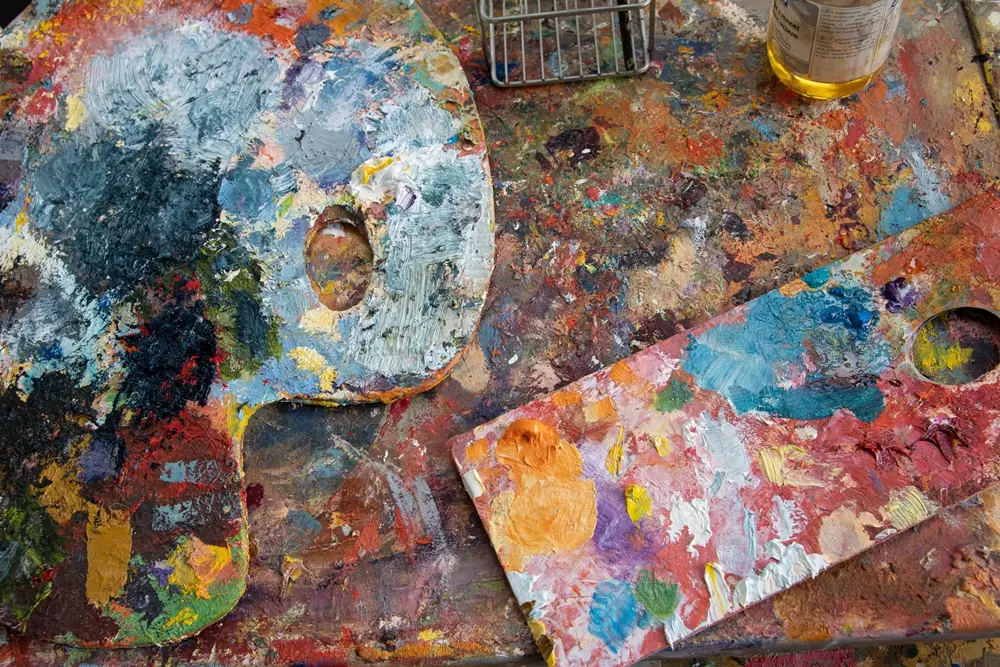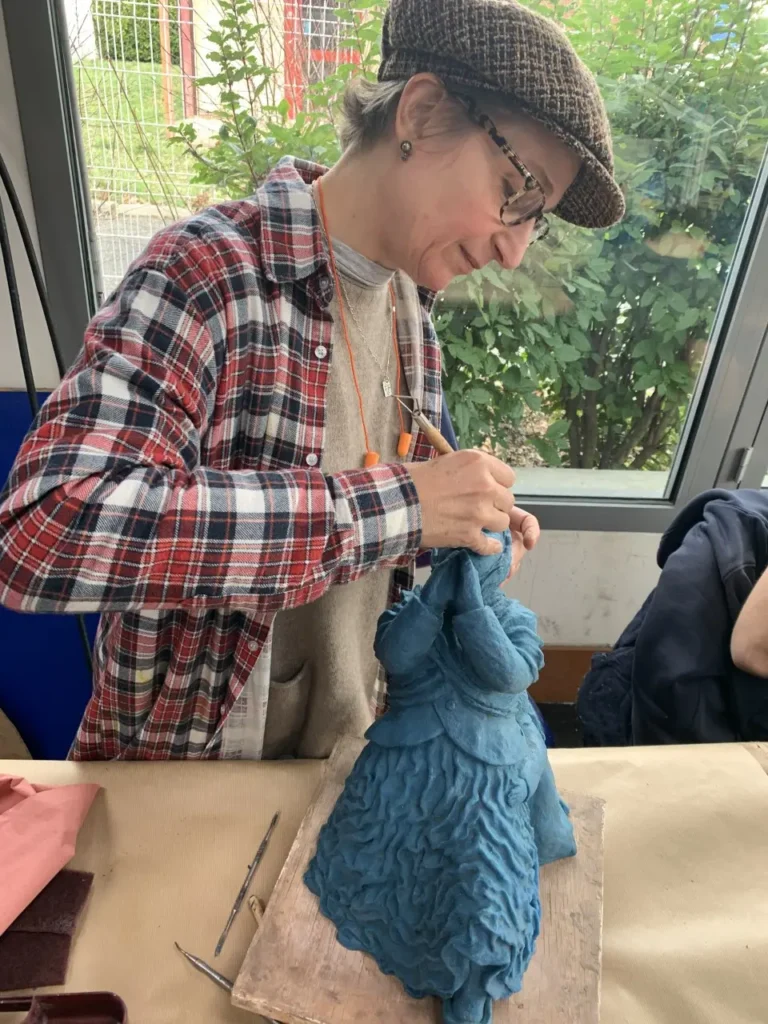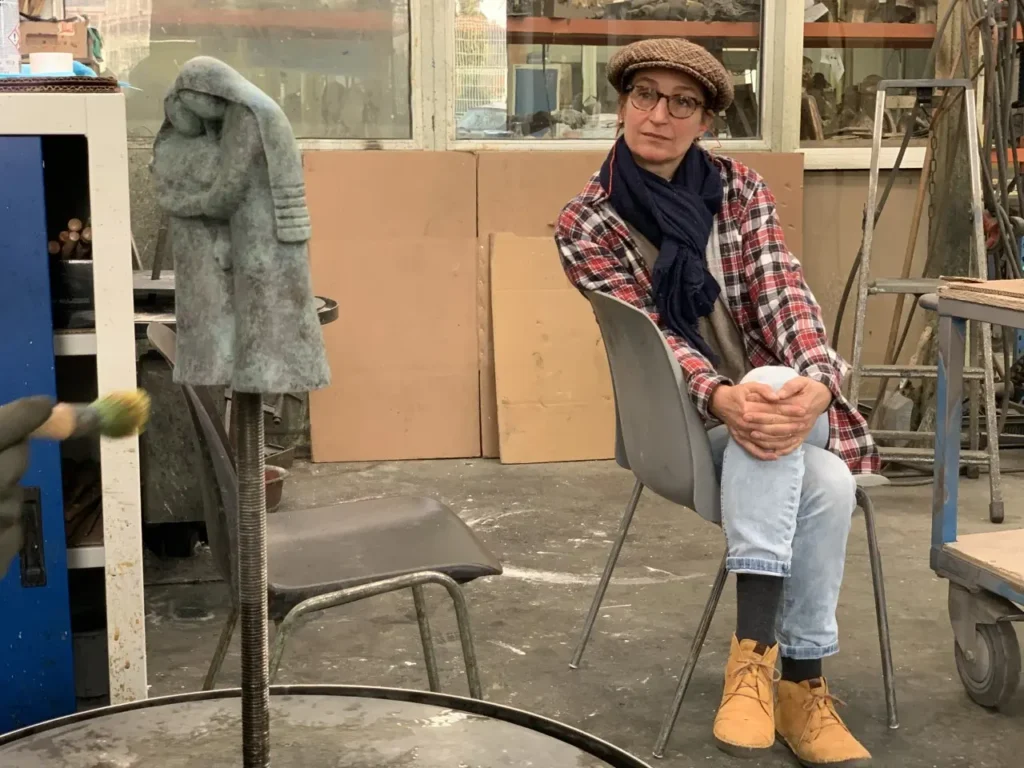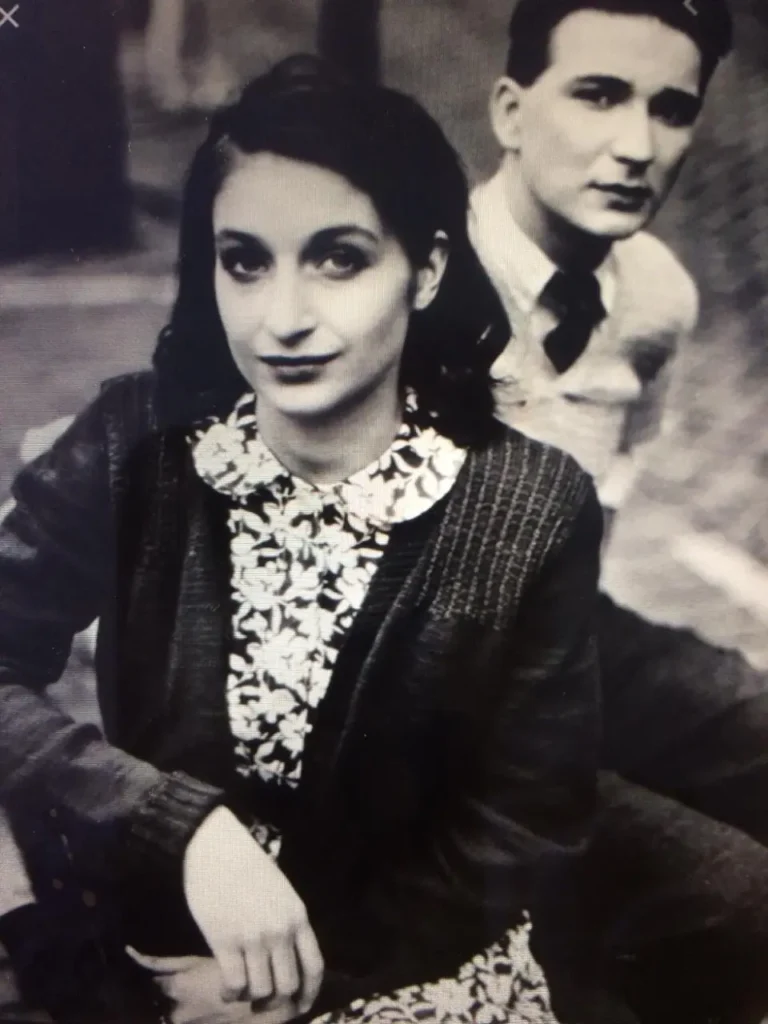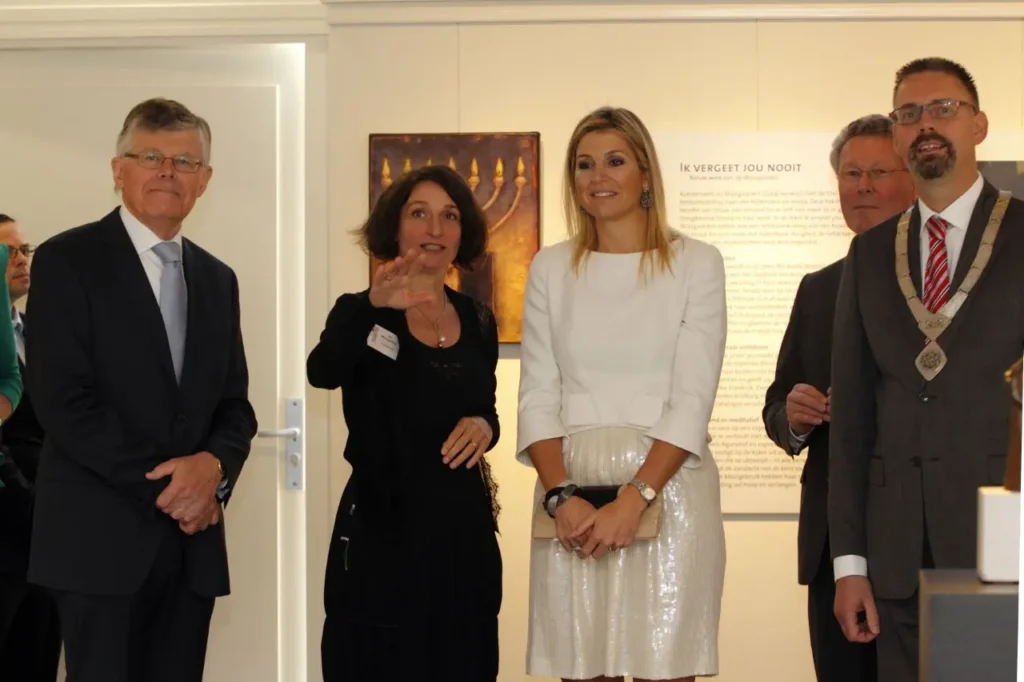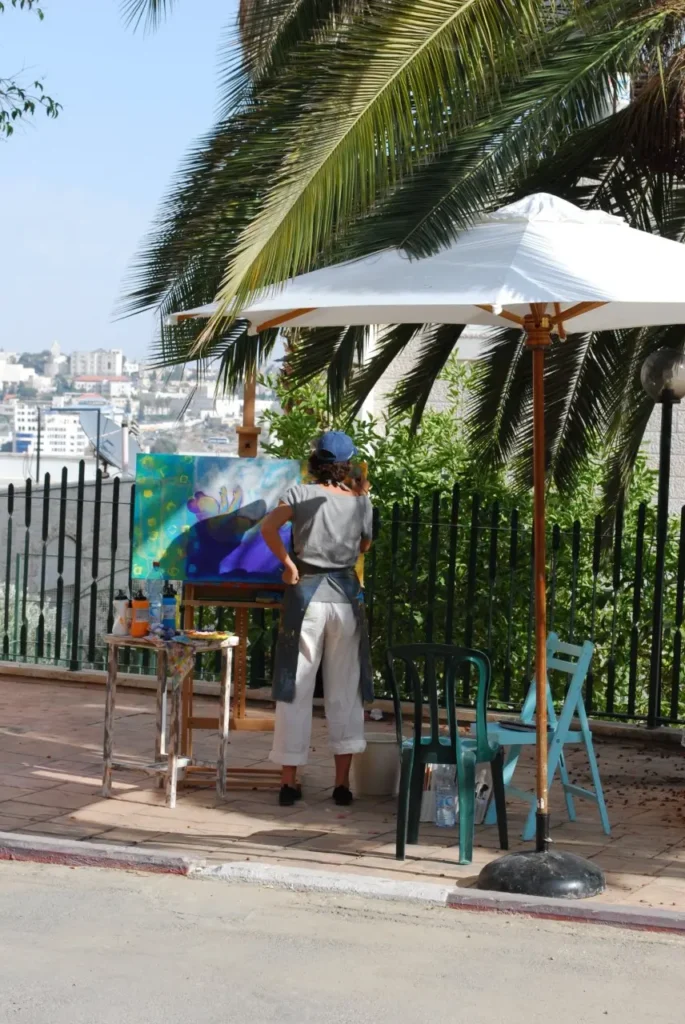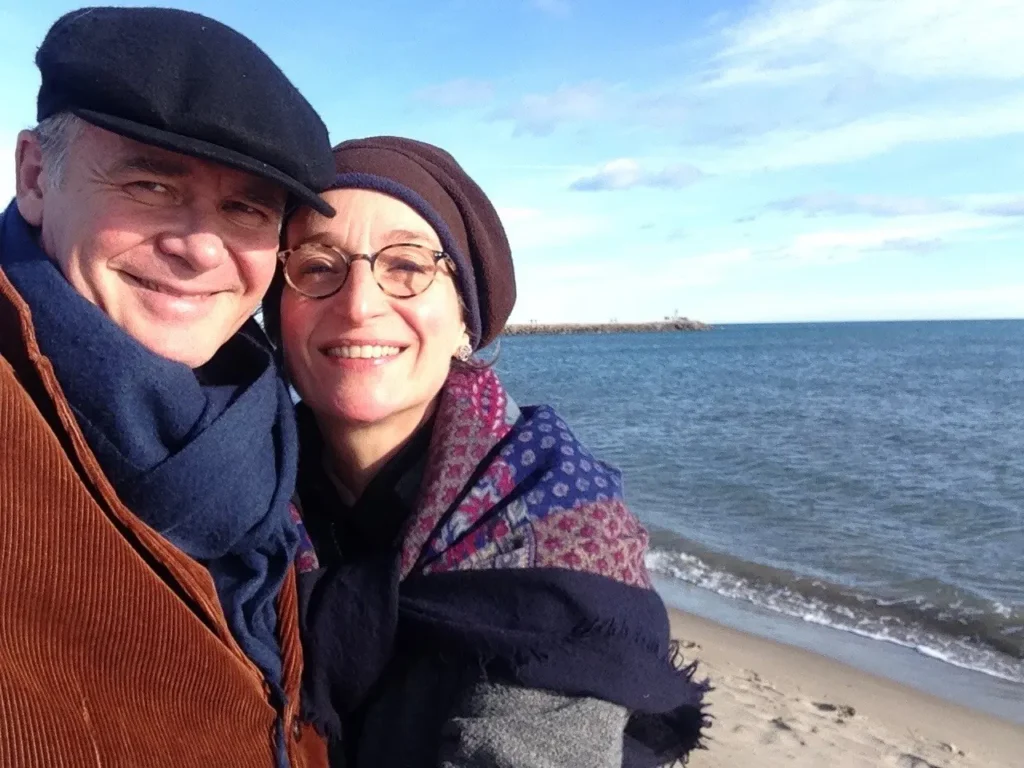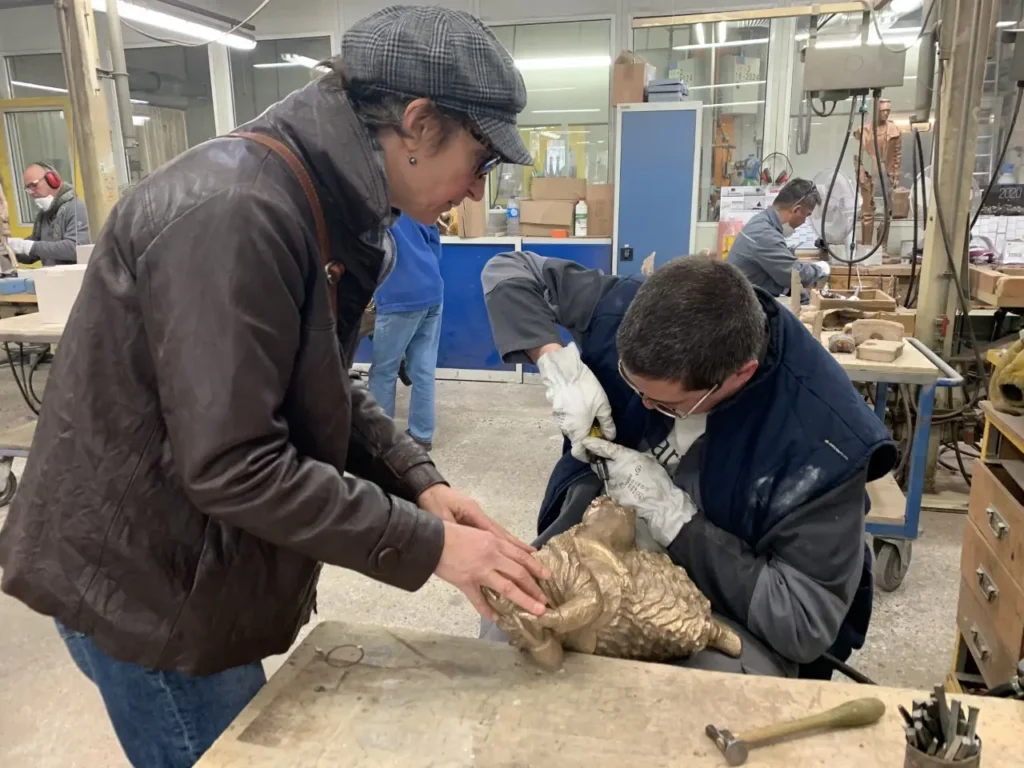My Story
Jip Wijngaarden was born in Amsterdam in 1964 and raised in the countryside. From her childhood she loved nature and discovered a passion for drawing.
In the 80s she studied styling, drawing and decoration in Utrecht and developed a strong sensitivity for color and contrast. Her goal is to enter the Academy of Fine Arts.
In 1982, thanks to a combination of circumstances, she was chosen from 3000 young girls to play the role of Anne Frank in a Dutch play and later in a TV movie.
Jip moves to Amsterdam thinking she can return to her studies after a year of interruption. Nevertheless the role of Anne Frank propels her into the world of comedy for ten years when she becomes a renowned actress. During this time, however, she did not abandon her passion for drawing, created sets and costumes for the theater, made sketches and painted canvases in the former studio of the painter and photographer GH Breitner, which she used as an apartment.
She likes to hang out in the Stedelijk Museum where she finds her main sources of inspiration. She is fascinated by the colors of the abstract works of Willem de Kooning, the delicacy of the paintings by Paul Klee, the monumental works of Anselm Kiefer and later the figurative paintings by Jozef Israëls.
France | Swiss
In 1990 Jip married French sound engineer Philippe Combes and moved to Paris. The two find faith in the God of the Bible, which profoundly changes the way they see things.
Later the couple settled near Geneva where Philippe found a job on Swiss French television. During the following years, Jip withdrew more and more from the scene to devote herself entirely to painting. This remains her favorite art, but she also begins to sculpt and embarks on engraving, of which she learns the first rudiments in a small workshop in Rolle. She also studies Hebrew at the Jewish House in Geneva.
Her style
Far from artistic circles and allergic to all that is fashion and trend of the market Jip paints like she prays, intimate, vulnerable, as if no one should ever see her works one day. On her lonely path she gradually comes to find a style that could best be described as figurative expressionism. Her oil-painted canvases, in intense colors, are often dotted with Hebrew letters, symbolic objects that send us back to a certain vision of the world and undoubtedly give a Jewish tone to her work.
On her painting we meet faces with marked features and eloquent looks, as if they had something important to tell us.
In a way, they invite us to join them, to enter their world where there is room for pain, consolation, dismay and hope.
Jip Wijngaarden is primarily interested in human emotion. Many times she composes her scenes around one or a few characters but even if there is no visible person on the canvas there is always someone present, precisely in his absence.
There is a meditative side in the art of Jip; her paintings are born from contemplation and invite reflection!
Hier first art exhibition, a commemorative exhibition on the Shoah, takes place in the old synagogue in Kampen (NL) and will be followed by many others.
After a large number of exhibitions in the Netherlands and Switzerland, the couple moved to the French Cévennes.
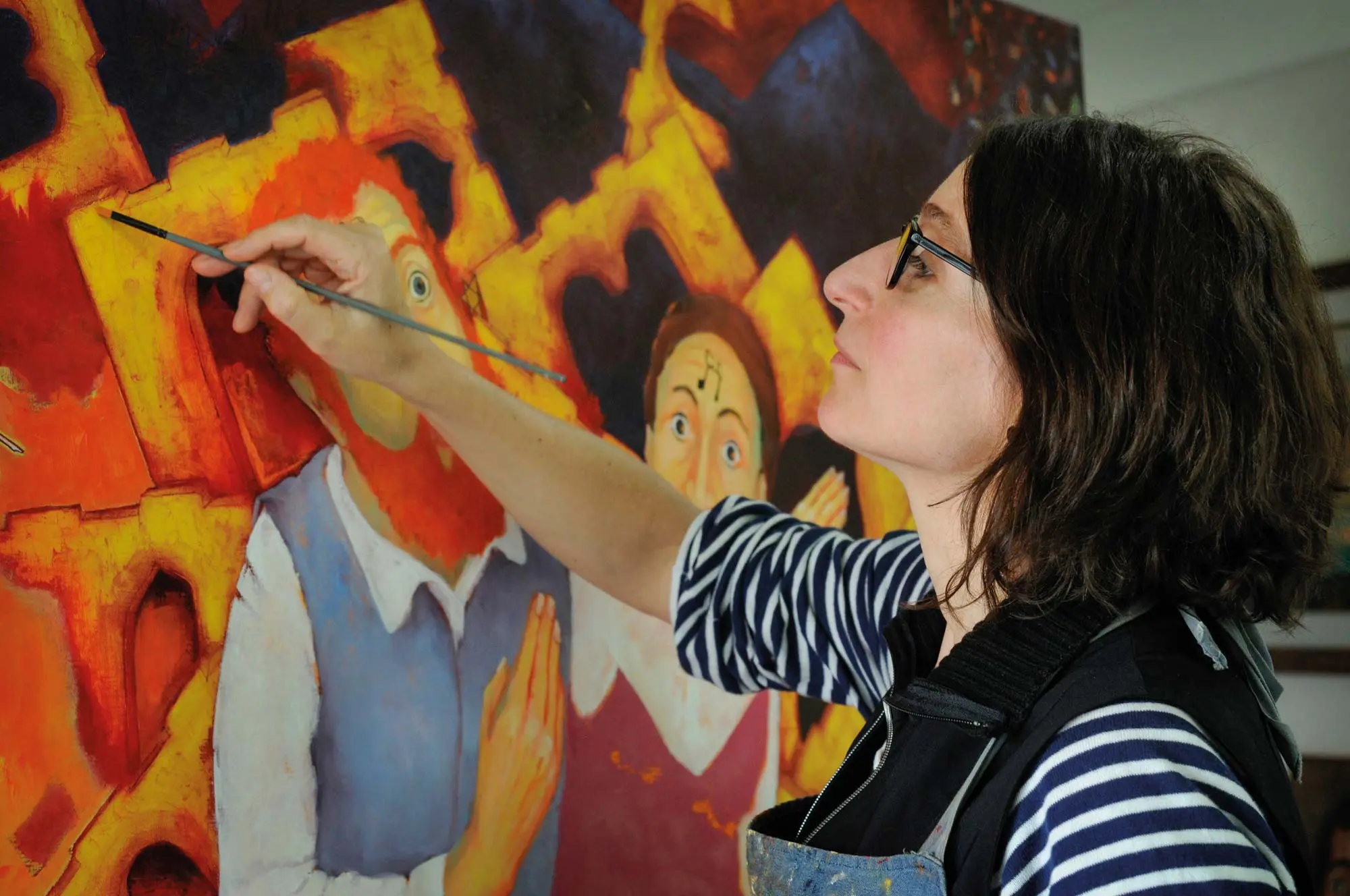
Curriculum Vitae
1964 Born on 5 July in Amsterdam and named Janneke Wijngaarden.
1980 Starts an accelerated study programme at the Nimeto Academy in Utrecht in preparation for art school. Janneke shortened to Jip.
1982 Jip auditions for the role of Anne Frank in the theatrical production of The Diary of Anne Frank, directed by Jeroen Krabbé.
1983 Jip leaves the Nimeto Academy and moves to Amsterdam. She plays the role of Anne Frank for two theatre seasons and plays the starring role in the movie. Between 1983 and 1990, Jip plays in various film and theatre roles, including Rosalie in Bij naderinzien, directed by Frans Weisz, and the female lead in the Dutch TV movie Hoogvlieger. She works at a Dutch radio show called Koplopr, writing columns for the show, and co-founds the theatre company De Zaak, working as actress, stage set and costume designer and maker.
1987 Model drawing at the Van Gogh Museum.
1988 Freelance costume designer and assistant stage set designer on Philoctetes, a play performed by the theatre company, Het Vervolg.
1989 Role of Sien Hoornik in a French/English/Dutch co-production by Robert Altman about the life of Vincent van Gogh. The film is recorded partly on location in France. Jip meets French soundman Philippe Combes on the set.
1990 Jip moves to Paris and marries Philippe Combes. Jip and Philippe come to faith in the Messiah, Yeshua.
1991 Jip is baptised in Point du Jour, Paris.
1993 Philippe and Jip move to the Thonon-les-Bains area, near Lake Geneva. Jip gives theatre classes and adapts a letter written by Etty Hillesum into a monologue that she performs in French in Strasbourg.
1994 First meeting with Arthur Katz. TV Presenter of a documentary about the Shoah entitled Ik kan er niet meer maar kijken, part of which was filmed in Israel. Jip and Philippe move to the Pays de Gex.
1995 Supporting role in the film La colline aux milles enfants.
1997 Start of Hebrew study at the Jewish school in Geneva. Starring role in the TV film Blindganger, directed by Mark Timmer.
1999 Death of her father Jan Wijngaarden. Philippe and Jip start building their chalet in Sergy. Philippe also builds a studio for Jip.
2000 Jip starts painting on the theme of Israel and the Bible.
2002 Model drawing at the Geneva Art Academy.
2003 First major exhibition in the former synagogue in the Dutch town of Kampen, entitled Boulevard des Déportés, followed by an exhibition in the Etty Hillesum Centre in Deventer, The Netherlands.
2004 Exhibition in the great synagogue of Groningen. Exhibition in the city hall in the Dutch town of Ermelo in the context of Memorial Day and Liberation Day (4 and 5 May), where Jip gives a presentation about her paintings in the local theatre. Exhibition in the small Orthodox synagogue in the Dutch town of Aalten.
2005 Exhibition in the great synagogue in Enschede entitled Time Stood Still.
2006 Jip takes an engraving course in Rolle, Switzerland. She works towards a new exhibition in honour of the opening of the Elburg shul.
2007 Jip paints extensively and gives presentations on her work in France, Switzerland and Austria.
2008 Opening of the exhibition entitled Your People, My People in the museum of Elburg, and publication of the book by the same title.
2009 Exhibition on display in the great synagogue of Groningen. Jip takes part in the TV show Op 3 Ezels in Israel. A new studio is built in Sergy.
2010 Hosting of the gala to celebrate the 50th anniversary of the Anne Frank House, held in Amsterdam’s Westerkerk, with Queen Beatrix as the guest of honour. Car accident, with drastic consequences.
2011 Emergency hospital admission, later followed by major back surgery; the operation was a success.
2012 Jip resumes work and starts painting new pieces in her studio. Opening of the exhibition I Will Never Forget You in the new wing of the Elburg shul, opened by Princess Máxima. Paintings from the Boulevard des Déportés series hang in the Christians for Israel centre in the Dutch town of Nijkerk for several months.
2013 New operation, this time at the her neck. Exhibition entitled Please come home for Shabbat in the great synagogue in Groningen.
2014 Jip paints a new series of paintings and works on her book Ancient Path Dutch-English version.
2015 Exhibition in the Old Church of Delft and at the end of the year at the museum of the synagogue in Elburg.
2016 Exhibition in the Gutenberg Museum in Fribourg (Switzerland) and release of the book The Tree of Life (French / German and Dutch / English version).
2017 Jip and Philippe moved from the Jura to the Cevennes.
2019 There, they built a large new studio where Jip began a series of paintings about the persecution of both the French Huguenots and the Jewish people.
2020 Jip held her first French exhibition in the Cevennes.
2023 Jip and Philippe initiated a gathering against rising antisemitism in France at the ‘Musée du Désert’ in Mialet, where a bronze relief was presented to Chief Rabbi Haïm Korsia.
2024 Her mother, Ankie Wijngaarden-Besnard, passed away.
2025 Exhibition in the Jacobijnerkerk in Leeuwarden to commemorate the 80th anniversary of the city’s liberation. Publication of ‘Portrait of Jip Wijngaarden’.
